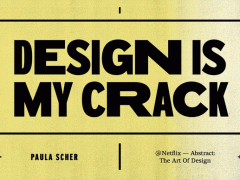Bruce Mau Design X PPS: Laura Stein on a typography-heavy, totally optimistic massive rebranding
Project for Public Spaces (PPS), the nonprofit organization working on the ground in communities worldwide to bring together people across disciplines and sectors to envision, plan and transform public spaces for the better has a brand new visual identity with typography as its cornerstone.
As PPS enters a new era, under new leadership, Bruce Mau Design has designed a dynamic fill-in-the-blank identity system which “signals the organization’s mandate to imagine possibilities, together with the communities it works with. The rebrand is people-driven and celebrates the impact of public spaces and placemaking on individuals and cities alike.”
The result of two-year engagement with Bruce Mau Design (BMD) and Big Duck to reimagine the PPS brand from top to bottom to better reflect our evolving direction the massive rebrand aims to put people first.
PPS's new language and visual identity is an ongoing affair, a typographic-heavy rebranding “about the relationships, stories, and experiences that people have as they use and co-create a public space. That’s why at the heart of our new brand is a fill-in-the-blank. The most well-used and well-loved public spaces act as an open platform—a fill-in-the-blank—for the communities they serve” reads the project announcement.
We caught up with Laura Stein, Chief Creative Officer at Bruce Mau Design, on more insights of a much-needed case study of optimistic rebranding for good.
Τyperoom: First things first. What was the briefing for the rebranding of Project for Public Spaces (PPS)?
Laura Stein: PPS was in the midst of transitioning to new leadership and strategy and asked BMD to re-imagine their visual identity. As part of the brief, we were asked to deliver an identity that would build upon PPS’s history and new brand strategy, capture their dedication to community-powered public spaces and bring forward a fresh new tone. The new visual identity also needed to communicate to different audiences. It had to be approachable for the communities they work with and at the same time signal a trusted partner for city planners, governments and funders.
TR: What is the design approach of the rebranding?
LS: To kick off the project, BMD conducted a multi-day, collaborative workshop with Project for Public Spaces in NYC to get a better understanding of their ambition, history and organization overall. We synthesized those learnings into design principles that guided the design explorations. Throughout the entire project, the process stayed highly iterative and collaborative, and not only with the key stakeholders. At regular intervals the Project for Public Spaces staff were included and consulted.
As a collaborative organization ourselves, it was great to join forces with Project for Public Spaces. We learned a lot from each other.
TR: PPS is a non-profit working in communities worldwide to envision, plan and transform public spaces for the better. In which ways did you capture the organization’s spirit?
LS: PPS is a collaborative, optimistic, people-focused organization. The fill-in-the-blank aspect of the identity represents that collaboration and a kind of collective imagining that is key to what they do. It also illustrates PPS’s approach to placemaking: places as a means to an end—the impact they have on people’s lives, the stories and experiences that take place within them. The optimistic type, palette and illustrative approach are all anchored by linework that also works as a layout grid. So there is blue-sky imagining as well as the structure of planning and getting things done. And because they work with different audiences, we created an identity that can be dialed up or down while still keeping the core ideas intact.
TR: Which was the most challenging aspect of the project?
LS: Creating an expressive visual identity system that would be mainly used by non-designers. Figuring out tools to keep the intention alive and be simple to implement was an interesting challenge for us.
TR: How long have you and your team worked on the PPS rebranding?
LS: From brief to wrapping up the project, the process was about 6 months.
TR: Which was the structure of the team?
LS: The team had 2 graphic designers and a motion designer, with direction by our Associate Creative Director. Our Director of Design Strategy helped kick things off and set the strategy.
TR: Has the pandemic affected the work flow?
LS: We were lucky enough to finish this project before work from home orders and had multiple in-person sessions in NYC with PPS. The identity launched a few months after the work wrapped.
TR: How important is typography in the final product?
LS: Typography is the cornerstone of this identity. This is an identity that brings forward stories, told verbally as well as visually. The interaction of typography with the grid and illustrations is what makes this identity compelling and unique.
TR: Which fonts did you choose and why?
LS: Doyle and Beatrice, both from Sharp Type. Doyle for its organic and approachable and human forms. Beatrice as a more hard-working counterpart for it that still feels friendly.
TR: How would you describe the PPS rebranding in five words or less?
LS: Full of possibility.
TR: The rebrand is rather optimistic, a great choice amid the lockdowns and the rather dystopian times we live in. Do you think design can play a vital role in social change? In which ways?
LS: I’ll focus on communication design here and yes, it can absolutely play a role in social change. It can impact the way we think or feel about ideas or organizations. It has a big role to play in inviting people in and making them feel welcome, in helping people access information, in connecting people to each other. Design can help rally communities and ultimately galvanize action.
TR: Why branding matters for public spaces?
LS: Branding is about conveying meaning — about the ideas, stories, and feelings that people will carry with them as they engage with us. In the case of public spaces, they are often, whether activated or not, already part of a community. The role of branding is about engaging those communities. In order to do that, we need to ensure that everyone feels welcome and safe. That the spaces reflect the varied people they serve. And understand that the histories of these spaces and the ambitions we now have for them may be different.
These are often cultural spaces nested inside other cultural spaces. Defining a brand idea that addresses those aspects through naming, messaging, and visual design plays a big role in whether or not people want to engage.
All images via BMD.
Tags/ typography, graphic design, visual identity, interview, rebranding, public spaces, bruce mau design, laura stein


.jpg)




















